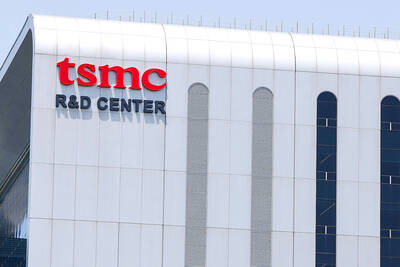The IBM “endorsement effect” has often shaped the computer industry over the years. In 1981, when IBM entered the personal computer business, the company decisively pushed an upstart technology into the mainstream.
In 2000, the open-source operating system Linux was viewed askance in many corporations as an oddball creation and even legally risky to use, since the open-source ethos prefers sharing ideas rather than owning them, but IBM endorsed Linux and poured money and people into accelerating the adoption of the open-source operating system.
APACHE SPARK
IBM was yesterday scheduled to announce a broadly similar move in big data software. The company is placing a large investment — contributing software developers, technology and education programs — behind an open-source project for real-time data analysis, called Apache Spark.
The commitment, according to Robert Picciano, senior vice president for IBM’s data analytics business, will amount to “hundreds of millions of dollars” a year.
In the big data software market, much of the attention and investment so far has been focused on Apache Hadoop and the companies distributing that open-source software, including Cloudera, Hortonworks and MapR.
Hadoop, put simply, is the software that makes it possible to handle and analyze vast volumes of all kinds of data. The technology came out of the pure Internet companies like Google and Yahoo, and is increasingly being used by mainstream companies, which want to do similar big data analysis in their businesses.
SPEED
However, if Hadoop opens the door to probing vast volumes of data, Spark promises speed. Real-time processing is essential for many applications, from analyzing sensor data streaming from machines to sales transactions on online marketplaces.
The Spark technology was developed at the Algorithms, Machines and People Lab at the University of California, Berkeley. A group from the Berkeley lab founded a company two years ago, Databricks, which offers Spark software as a cloud service.
Spark, Picciano said, is crucial technology that will make it possible to “really deliver on the promise of big data.”
That promise, he said, is to quickly gain insights from data to save time and costs, and to spot opportunities in fields like sales and new product development.
IBM said it will put more than 3,500 of its developers and researchers to work on Spark-related projects. It will contribute machine-learning technology to the open-source project, and embed Spark in IBM’s data analysis and commerce software. IBM will also offer Spark as a service on its programming platform for cloud software development, Bluemix. The company will open a Spark technology center in San Francisco to pursue Spark-based innovations.
PARTNERSHIPS
IBM also plans to partner with academic and private education organizations, including UC Berkeley’s AMPLab, DataCamp, Galvanize and Big Data University to teach Spark to as many as 1 million data engineers and data scientists.
By aligning itself with a popular open-source project, IBM, they said, hopes to attract more software engineers to use its big data software tools, too.
“It’s first and foremost a play for the minds — and hearts — of developers,” IDC analyst Dan Vesset said.

The Eurovision Song Contest has seen a surge in punter interest at the bookmakers, becoming a major betting event, experts said ahead of last night’s giant glamfest in Basel. “Eurovision has quietly become one of the biggest betting events of the year,” said Tomi Huttunen, senior manager of the Online Computer Finland (OCS) betting and casino platform. Betting sites have long been used to gauge which way voters might be leaning ahead of the world’s biggest televised live music event. However, bookmakers highlight a huge increase in engagement in recent years — and this year in particular. “We’ve already passed 2023’s total activity and

Nvidia Corp CEO Jensen Huang (黃仁勳) today announced that his company has selected "Beitou Shilin" in Taipei for its new Taiwan office, called Nvidia Constellation, putting an end to months of speculation. Industry sources have said that the tech giant has been eyeing the Beitou Shilin Science Park as the site of its new overseas headquarters, and speculated that the new headquarters would be built on two plots of land designated as "T17" and "T18," which span 3.89 hectares in the park. "I think it's time for us to reveal one of the largest products we've ever built," Huang said near the

BIG BUCKS: Chairman Wei is expected to receive NT$34.12 million on a proposed NT$5 cash dividend plan, while the National Development Fund would get NT$8.27 billion Taiwan Semiconductor Manufacturing Co (TSMC, 台積電), the world’s largest contract chipmaker, yesterday announced that its board of directors approved US$15.25 billion in capital appropriations for long-term expansion to meet growing demand. The funds are to be used for installing advanced technology and packaging capacity, expanding mature and specialty technology, and constructing fabs with facility systems, TSMC said in a statement. The board also approved a proposal to distribute a NT$5 cash dividend per share, based on first-quarter earnings per share of NT$13.94, it said. That surpasses the NT$4.50 dividend for the fourth quarter of last year. TSMC has said that while it is eager

China yesterday announced anti-dumping duties as high as 74.9 percent on imports of polyoxymethylene (POM) copolymers, a type of engineering plastic, from Taiwan, the US, the EU and Japan. The Chinese Ministry of Commerce’s findings conclude a probe launched in May last year, shortly after the US sharply increased tariffs on Chinese electric vehicles, computer chips and other imports. POM copolymers can partially replace metals such as copper and zinc, and have various applications, including in auto parts, electronics and medical equipment, the Chinese ministry has said. In January, it said initial investigations had determined that dumping was taking place, and implemented preliminary